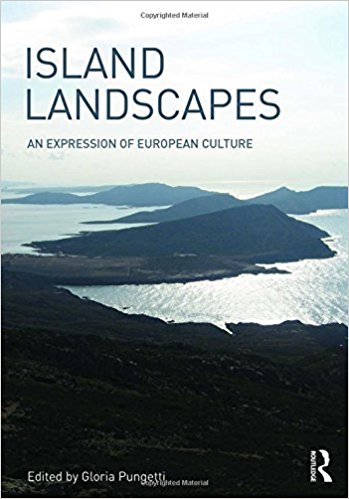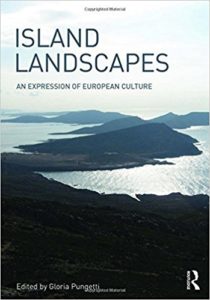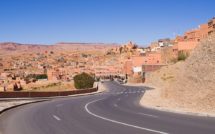

This is part of our special feature on Tourism: People, Places & Mobilities.
This book is a pan-European venture on islands, a product of the European Union, and presumably it is just this sort of exciting and useful project to which I, the reviewer, would not be eligible to join in the future given Brexit, even though my own part of the UK (Northern Ireland) voted strongly to remain. The non-token Briton involved in this pre-Brexit project was Professor Oliver Rackham, FBA, who had much experience of EU schemes of this nature, but who died, sadly, in 2015 aged seventy-five, shortly after completing his work for the book. Fittingly the last illustration (Figure 35.2) shows Rackham standing in a wood; one wonders if that wood was on an island. The only hope for Britons is that there are chapters here on Iceland, Norway, and Turkey, none in the EU, so perhaps sensible accommodation might be made in future to enable continued British co-operation in valuable projects like this.
The venture upon which Island Landscapes: An Expression of European Culture reports is the ESLAND Project (European Culture expressed in Island Landscapes), which as the editor, Gloria Pungetti, explains “aims to improve consideration of European island landscapes as part of our cultural heritage” (1). European from the location (and the funding); islands because: “People dream of islands, being there, in solitude or in a crowd, for enjoyment or for punishment, on holidays or for work. Islands in poetry are often pastoral landscapes, blue sea and environmental utopias. In paintings and photography, they provide inspirational images for works of art. In science they are laboratories for ecological and cultural studies” (xxiv). Islands, in short, are significant geographical features, important beyond their size. They deserve to be valued, even cherished, and above all, they deserve to be studied. In the last three decades, the multi-disciplinary subject of Island Studies has developed and Gloria Pungetti’s edited volume is a worthy addition to its canon of literature.
The book is extensively illustrated with color photographs, some drawings, diagrams, and maps, although one would have liked the maps at least to have been set into a house style. The book’s language is English, which ironically, given its status as many Europeans’ second language will presumably retain some EU status post-Brexit. Only occasionally does the language jar; I struggled with Venice’s “underwater canals” in Chapter 30, until I realized that these were navigational channels.
The book has four main parts: on island landscape history; character; identity; and scenario, planning and tools. The themes are illustrated by studies of islands in Croatia, Cyprus, Denmark, Estonia, Greece, Iceland, Italy, Malta, Norway, Portugal, Turkey, and the UK. Within the sections are some often short studies detailing particular islands or themes played out on an island. Sometimes these are too short and left the reviewer wanting to know more. One such is Rackham’s own study of the Scilly Isles off southwest England (Chapter 3), which is descriptive but might have benefitted from more explanation. A later chapter (25) also on Scilly by Dave Hooley, makes no cross-reference to Chapter 3, which seems a wasted opportunity. A contrast to the descriptive work on Scilly is another study by Rackham, this time of Saaremaa in Estonia where there is a powerfully-expressed explanation for the somewhat devastated landscape described as such: “Saaremaa is an example of the damage that murderous ideologies do to people, societies and landscape”’ (45).
More satisfying in many ways are substantial chapters that demonstrate a methodology, which not only deepens their explanation, but would also encourage other scholars to take up the ideas for further study. Here I can particularly recommend Chapter 12 on the Azores by Rosário Oliveira and Nuno Guiomar, which shows “how to integrate the contribution of local people in defining the landscape they wish to have in the future and as a model for collaborative landscape management” (110). Pungetti’s own Chapter 20 about Korčula, Coatia, written with Marko Prem and Sani Sardelić, is also well crafted, laying out as it does the ESLAND methodological framework of questionnaires, mind mapping and evaluation of island landscapes before applying it to the island in question. There is a cross reference to the previous chapter, 19, in which the methodology is also set out, particularly in terms of cognitive mapping in a study of Venice, again by Pungetti, this time with Valentina Stefanini and Suzanna Miles. Such techniques were also used in the Cyprus study (Chapter 21 by Ionnis Vogiatzakis, Vassilis Trigkas and Maria Zomemi), identity and cognition being of overwhelming significance on this divided island, but their study was handicapped by many of their respondents being reluctant to draw on the map supplied to them, a required element of the methodology.
The most rewarding section of the book is the fourth, on Island Landscape Planning, Scenarios and Tools, again because of its practical guidance on how studies can be carried out. Pungetti joins with Sandro Dettori to present the ESLAND approach as a toolkit to read island landscapes in Chapter 33. Saaremaa features again in Chapter 27. The six-author team led by Mart Külvik uses landscape scenario methods and concludes that such “can help in structuring the analysis of culture-nature and social interaction at visual landscape level, thereby supporting heritage and land use decision making for sustainable landscape development” (224). Note the absence of the word “island” in that sentence; Saaremaa has been used as a test case for wider applicability, the “island as laboratory” idea coming out again. Similarly, Chapter 32 on Sardinia by Marco Mellis, perhaps the best chapter in the book, considers this island’s Regional Landscape Plan, which was the first development of its nature in Italy and which, with its consideration of intangible heritage, makes “a valid tool for landscape government” (277). That island studies can have wider application is satisfying but in the concluding Chapter 35, Pungetti and Jala Makhzoumi come back to island exceptionalism: “Islands are often microcosms of their continental counterparts, but in many cases they retain a character that is quite distinct from the mainland,” whilst regarding island cultures they are “at once resistant to change, attached to traditional ways and practices” (289). In sum, and this is an apposite statement with which to end the review, “both cultural exchange and natural conditions make the European island landscape and seascape a unique natural and cultural mix” (289).
Reviewed by Stephen Royle, Queen’s University Belfast
Island Landscapes: An Expression of European Culture
Edited by Gloria Pungetti
Publisher: RoutledgeHardcover / 299 pages / 2017
ISBN: 9781472425447




